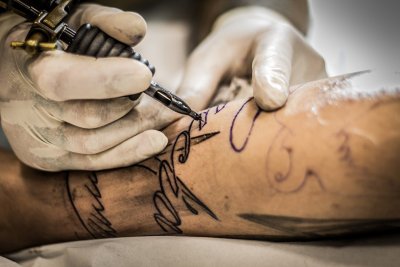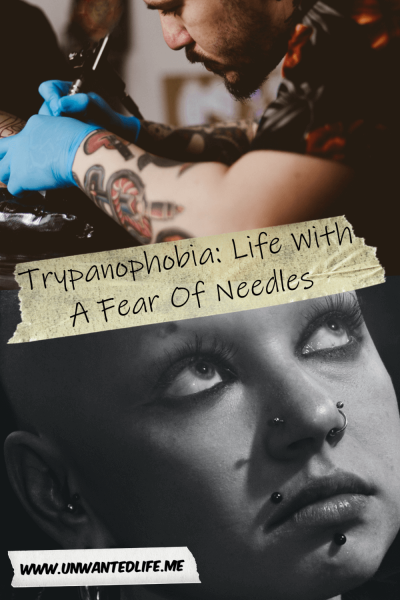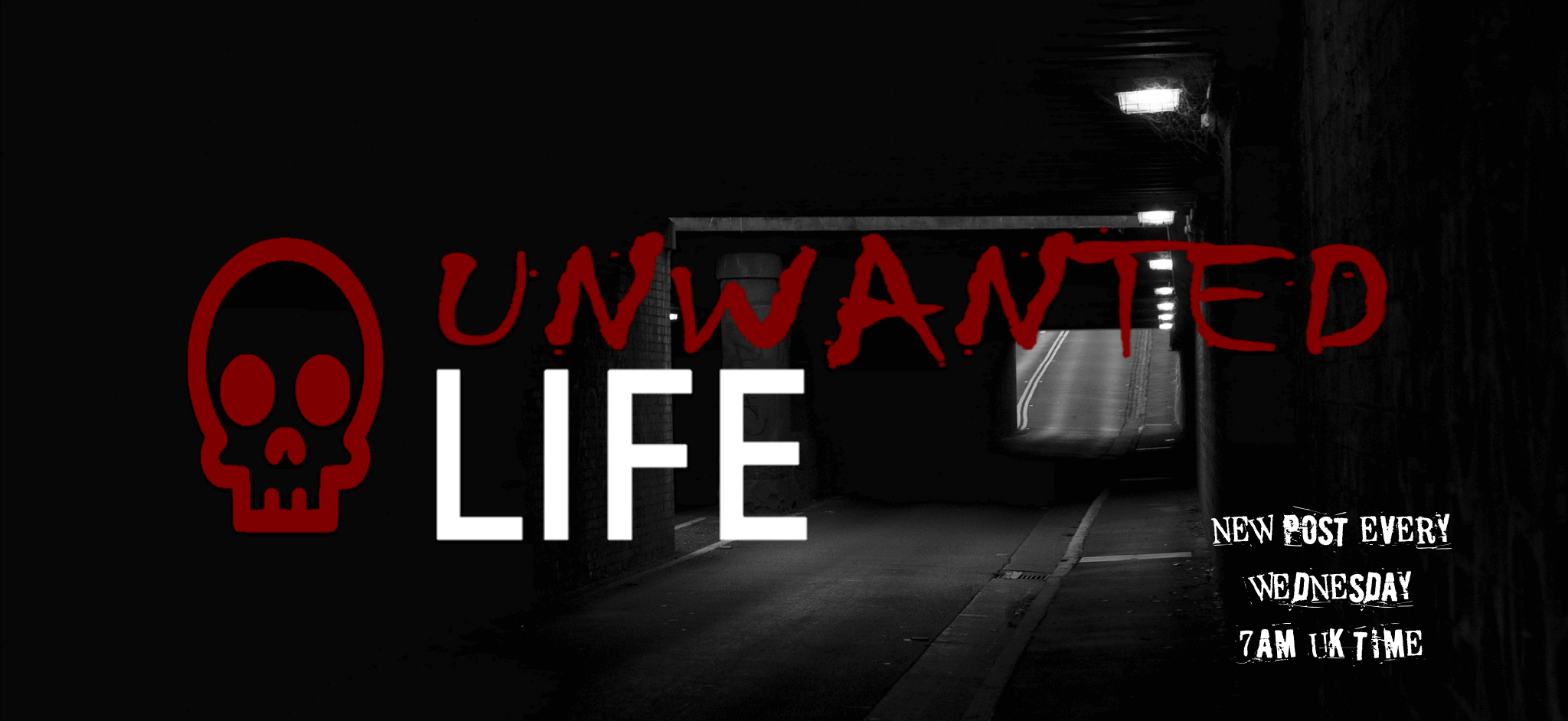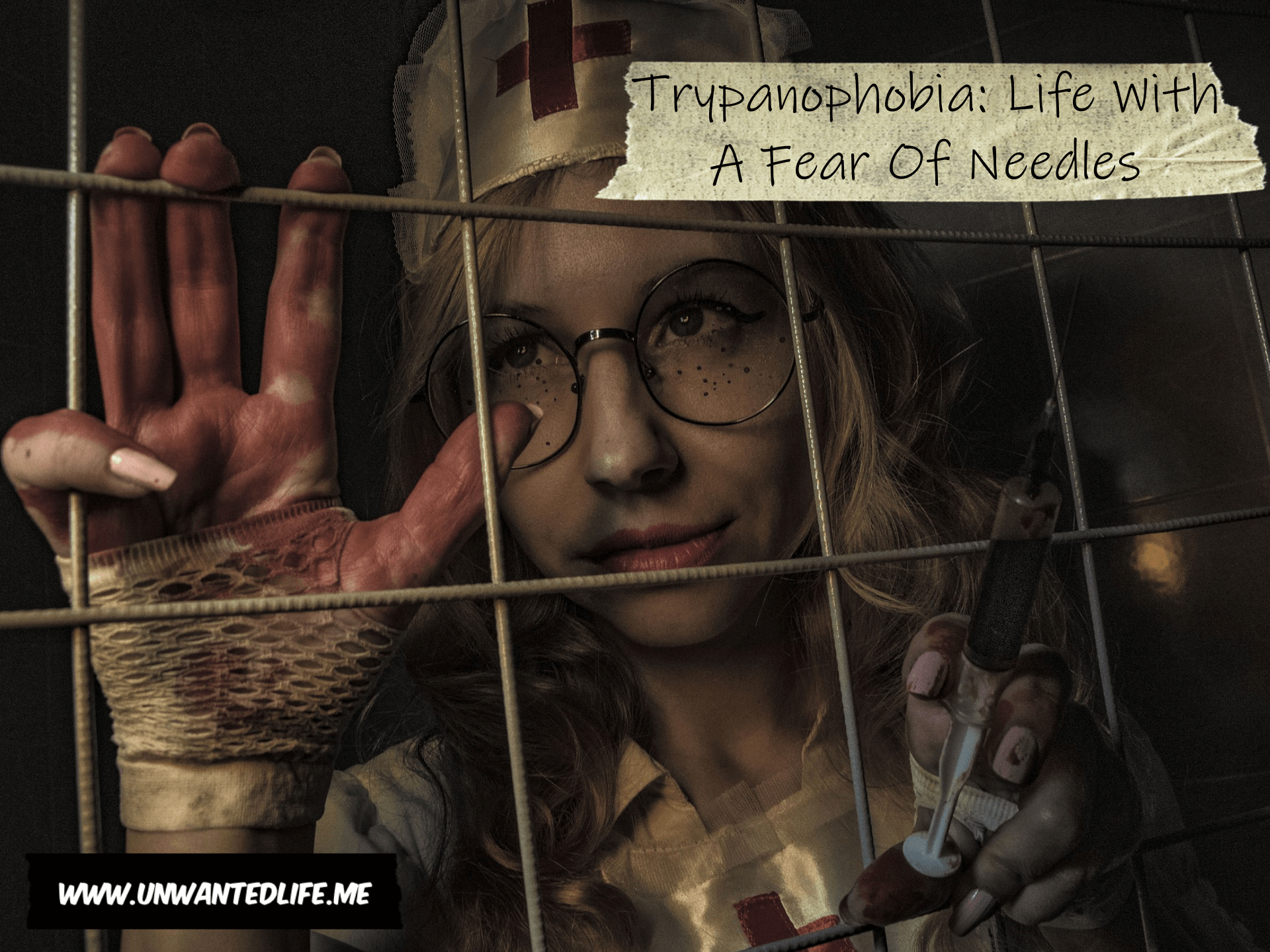In my previous article, My Short Synacthen Test (SST), I mentioned my fear of needles, or trypanophobia as it’s known. Thus, I thought I’d create an article about what a fear of needles is (trypanophobia) and what you can try in order to manage it.
I’ve had a fear of needles for as long as I can remember. But weirdly, it didn’t come from getting injections or blood tests. Not that I can remember, anyway. When I became suicidal as a child (Suicidal Child) I seem to have developed a bigger sensitivity to pain. This increased sensitivity then created an aversion to pain. Which in turn seems to have then extended to an aversion to needles.
Lots of people fear needles for one reason or another, and this seems to be my reason. However, if this apprehension of needles is persistent and unreasonable, by that I mean you miss getting stuff like blood tests, then your fear has become a phobia.
My pain aversion seemed to have developed into a proper needle phobia. I say this because I missed my meningitis vaccination at 19. I also used to put off getting blood tests that my GP referred me for. I was always putting them off for weeks, sometimes months. On one or two occasions, I didn’t get the test done at all. To make matters worse, I didn’t get my hepatitis B vaccination even though I was working for a substance abuse charity with at-risk clients who could have a blood-borne virus.
Symptoms Of A Fear Of Needles (Trypanophobia)
You’ll know if you’ve developed a phobic reaction to needles because you’ll have an anxiety response. Thus, you may experience some of the following:
- Feeling dizzy.
- Feeling light-headed.
- Develop a tremor.
- Increased heart rate and blood pressure.
- Palpitations.
- Breathing too fast.
- Feeling sick.
- Dry mouth.
- Feeling faint or actually fainting.
- You might have frightening thoughts running through your head.
Fear Of Needles Statistics
According to Anxiety UK, 3.5% to 10% of the population have a fear of needles. Although the NHS put this figure at approximately 1 in 10, people will have a fear of needles.
In the US, fear of needles affects approximately 50 million people, making it a top-ten American fear. It has been reported that of those 50 million sufferers, at least 20% avoid medical treatment as a result of their needle fear (PharmaJet).

Tips
Look away
One simple tip is to not look at the needle equipment. You should also look away when you’re being stuck with the needle as well. For a lot of sufferers, like me, it’s the anticipation that’s the problem. Once the needle is in, the anxiety disappears, leaving me calm.
You could also use a topical anaesthetic to numb the injection site to make this easier.
Breathing techniques
Breathing too quickly and deeply can cause you to feel dizzy, which could result in you fainting. Thus, taking regular slow breaths can help avoid these problems, which will also help manage your feelings of anxiety.
This breathing relaxation technique was suggested by the NHS and goes as follows:
- Make yourself comfortable in a seated position, but make sure your back is upright but not stiff.
- Then let your jaw and shoulders relax.
- Now put one hand down low on your belly.
- Take a slow, deep, long breath in through your nose and out through your mouth.
- The aim is to breathe so your belly expands more than your chest, so breathe right down into it, but don’t force it. We’re trying to relax after all.
- Breathe as deeply and comfortably as you can, and do this five times.
Try to practice this technique a few times a day for the week running up to you having to be around a needle.
Muscular relaxation
Progressive muscle relaxation is a method recommended by Anxiety Canada. The idea behind it is that by relaxing your body, you may be able to let go of anxious feelings and thoughts.
Step one
- First, go to an area free of distractions.
- Then get comfortable either sitting or lying down, whichever works best for you. You can close your eyes if that’ll help you with the process.
Step two
- Breathe in deeply through your nose and feel your abdomen rise as it becomes filled with air.
- Slowly exhale through your mouth, drawing your navel towards your spine.
- Repeat this breathing three to five times.
Step three
- Clench your toes as you press your heels toward the ground.
- Squeeze tightly for a few breaths as stated in Step two.
- Now flex your feet by pointing your toes towards your head and hold for a few seconds. Then release.
Step four
- Now work up your body from your feet up to your head, tightening and releasing each muscle group as you work your way up. Just like you did for your feet in Step three.
- Work up through your body like this: your legs; then your buttock muscles; next your abdomen; then your back; then move on to your hands; then your arms; and then your shoulders; now do your neck, and last your face.
- Tighten each muscle group for a few breaths as stated in Step two and slowly release.
- Repeat as needed if certain areas feel stiffer than others.
Step five
- Repeat the breathing exercise from Step two again a couple of times once you’ve finished with the tightening and releasing of all your muscle groups.
- Then try to be in the moment as you feel calmer and relaxed for as long as you can/want.
Like all relaxation techniques, it can take practice to get the full benefits of using these methods. So try each technique a few times before you dismiss them.
Simple visualisation exercise
This is a method I’ve never been good at because I find it impossible to visualise anything. A condition, I believe, is called aphantasia. I’m not completely devoid of the ability, but I may as well be. That’s just how bad it is.
Anyway, this technique involves creating an image in your mind as a way to focus on it.
- Create a real or imaginary ideal relaxation spot in your mind.
- Make it as happy and peaceful as you can, so that it can be a place you want to return to when you are looking to relax or calm down.
- Try to imagine it in as much detail as you can. Try to use all your senses to make it as real as possible. For example, the smell of a sea breeze, the feeling of the warm sand between your toes, and the glare of the hot sun as you lay sunbathing at the beach.
- Now close your eyes and take some regular slow breaths.
- Breathe in through your nose, and breathe out through your mouth.
- Focus on the place you created to relax in and take in all the details.
Do this exercise for 10 to 20 minutes.
Meditation
Racing negative thoughts is a common problem when anyone feels anxious. Thus, to counter this, you could try meditation. It’s been suggested that meditation helps with anxiety because it allows you to break up negative thought patterns.
There’s a helpful Wikihow guide to meditation you might find useful if you want to try this method. You can find that here.

Graded exposure
Graded exposure is a cognitive behavioural therapy technique, which works by creating desensitisation to what you fear. Simply put, for this technique, you break down your fear into small steps to overcome. Working your way through them one at a time to desensitise you to your fear: needles.
The fear will lessen the more you use this technique as you get used to doing it. I know it has for me. It’s the most successful method I’ve used to control my anxiety and has massively reduced the likelihood of me having a psychotic episode. But it’s also not the easiest one to use.
The easiest way to use this technique is to create a fear ladder. With the bottom step being the least you fear and the top step being the most you fear. The aim is to work your way to the top. As with each step achieved, the overall fear you’re climbing to will lessen.
Tips for climbing your fear ladder
- Make sure you have enough time set aside to climb your steps. This is something that shouldn’t be rushed, as everyone will work through this at their own pace.
- Set aside enough time to do each step as well.
- Stay with your fear when it hits you for as long as you can. Your anxiety will eventually reduce. It’s this anxiety reduction that’ll help train your mind that what you feared isn’t something that should be feared.
- Use one of the relaxation methods I’ve stated in this blog or another one that you found which works for you to help control your anxiety.
- As you work through these steps, try not to rely on your relaxation techniques the more you repeat each step. It’ll help with the process to reduce your reliance at each step as you get closer to moving up to the next step.
- Move up through the steps when you feel you’ve beaten the current step you’re one, and no longer need to rely on a relaxation technique to get through it.
- Remember, this isn’t a race. Take your time. You’ll have to practice each step a number of times before you feel comfortable at each step, and thus ready to move on to the next.
So, what could the possible steps of a fear ladder look like for a phobia of needles? I’m glad you asked. Below is an example of a possible fear ladder you could use.
Example of a fear ladder for a fear of needles
- Looking at a picture of a cartoon needle.
- Touch a picture of a real needle.
- Talk through the procedure for using a needle for a test, and about your fear of needles.
- Ask your GP/Nurse/Etc to allow you to hold a real needle.
- Injecting a fruit with a real needle.
- Get an injection yourself.
Seek professional help
If you feel you can’t manage your fear of needles on your own, then seek professional help. Behavioural therapies, such as cognitive behavioural therapy, are very useful for this kind of problem.
As always, leave your feedback in the comments section below. Also, feel free to share your experiences with needles and tips on how to manage the fear in order to get injections and blood tests in the comments section below as well. If you want to stay up-to-date with my blog, then sign up for my newsletter below. Alternatively, get push notifications for new articles by clicking the red bell icon in the bottom right corner.
Lastly, if you’d like to support my blog, then you can make a donation of any size below as well. Until next time, Unwanted Life readers.


This is a fascinating topic, it’s great that you’re bringing attention to it and providing tips on how to cope 🙂
Thank you
I’m terrified of needles! I panic so much even thinking about getting them. Thank you for writing this and discussing some very important tips. I’ll definitely be using these next time I get bloods taken!
Making sure you’re not hungry when you have a blood test also makes it less of a negative experience, in my experience
I definitely have this, not so much a quick shot in the arm. That doesn’t bother me. It’s getting blood drawn, or in one incident, a TB test that caused me to pass out, hit the floor hard, and bite my tongue. So, that didn’t help. I think that fear will always be there, but I’ll definitely keep these techniques in mind when the time comes again.
That sounds like quite the unlucky experience when you had your TB test done. Were you not sitting down when they gave you the test?
what an insightful and interesting read! thanks for bringing this topic to our attention.
Thanks for reading